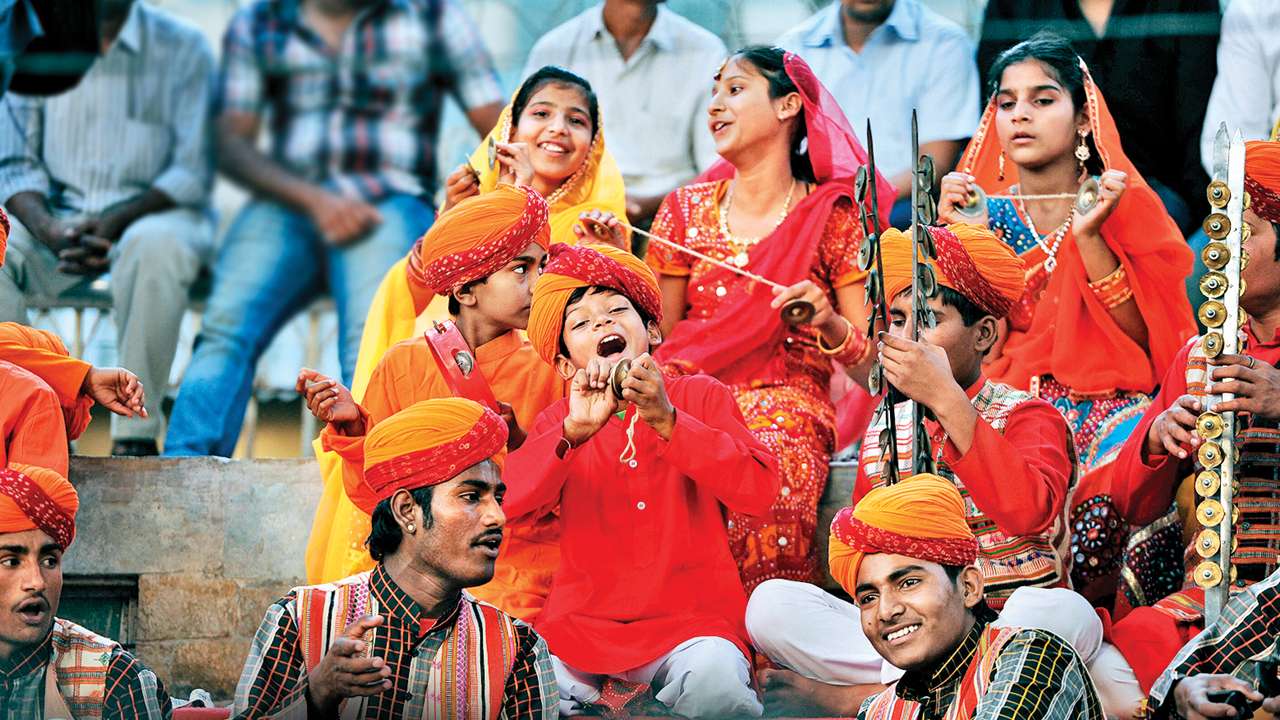
At a Mumbai concert on June 8, Rajasthani folk artiste Mame Khan matched his voice with Indian classical maestro Kaushiki Chakraborty. While the Manganiyar singer stuck to his roots, belting out songs of the soil, many an audience member called out requests for Ghoomar from Padmaavat and Nimooda from Hum Dil De Chuke Sanam. Though he stuck to his set list, opting to educate the audience with less popular branches of Rajasthani folk music, the requests were just another instance of how the magic of Rajasthan has seeped into Bollywood.
One of the biggest contributions of the desert state of Rajasthan to the cultural ethos of India will always remain its music, from which it has given bountifully to the world of classical, semi-classical and film music. While Sanjay Leela Bhansali's opulence overdose Padmaavat may have been panned by many, even detractors can't help praising the Ghoomar song.
"The music of what is now the state of Rajasthan has borrowed a lot from Persia and Central Asia along with Punjab and the Indo-Gangetic plains, which it has beautifully melded with the music of the wandering minstrels from across Sindh, Balochistan and the Rann of Kutch," explains Sarla Singh a Jaipur based classical vocalist.
Singh explains the appeal of the Ghoomar, which is based on Raga Sarang. "While using a raga drawn from Rajasthani folk influences, Bhansali intelligently weaves in two variations, Vrindavani and Madhmaad to give his composition a signature feel," she explains and adds, "As if that didn't evoke Rajasthan enough the unique ghoomar rhythm – dha dhin dhinak dhin/ ta dhin dhinak dhin – only adds to the feel."
While songs like this, Ismail Darbar's rendition of Nimooda (Hum Dil De Chuke Sanam) and Laximikant-Pyarelal's Choli Ke Peechey (Khal Nayak) have catchy beats, cultural and film historian Meghna Kashyap extolls the more soulful numbers as well. "Bollywood has also gone soulful with Rajasthani folk with several variants of the Raga Maand composition – Kesariya Balam (Lekin, Bawandar, Dor) or Morni Baaga Ma in Lamhe. There have also been experiments mixing a funky western beat with Rajasthani lyrics to create a different feel in songs like the Saibo song (Shor In The City) or Khamma Ghani (Happy Ending)," elaborates Meghna Kashyap. She is full of praise for the work of music composers like Ramlal (Sehra) Jaidev (Reshma Aur Shera, Do Boond Paani), Hridaynath Mangeshkar (Lekin), Shiv-Hari (Lamhe) and Vishwa Mohan Bhatt (Bawandar) for keeping the music linked to Rajasthan since the these films unfold in that region.
Asin Khan Langa, a Sindhi sarangi player who is a court musician of Jodhpur palace, also admits that there is very little variance between the ragas in the way they are played by regional folk musicians and exponents of Hindustani classical. "Because of our considerable practice, it is very easy to adapt and pick up something even if it is not part of our repertoire," he says but warns against a tendency to blindly link everything.
Some like percussionist-composer and musicologist Dr Aneesh Pradhan caution that there is more to Rajasthani folk music than meets the ear. "Since there is no documentation to show the movement from folk to the classical tradition, it is difficult to plot the points of this journey," he avers and points out, "Often in Rajasthan, the name we give to one raga is actually an entire form with several melodies/songs associated with it."
He is also all praise for the composite approach of most folk Rajasthani musicians to their craft. "The percussionist will know the lyrics, their context and how they will be sung as beautifully as the lead singer. That makes their music-making very different. Earlier classical music too had that approach, but we are losing it to specialised niches. We must restart that practice."
The ripples in the sand suggests it is happy at this prospect and calls out: "Padharo mhare des" (welcome to my land).